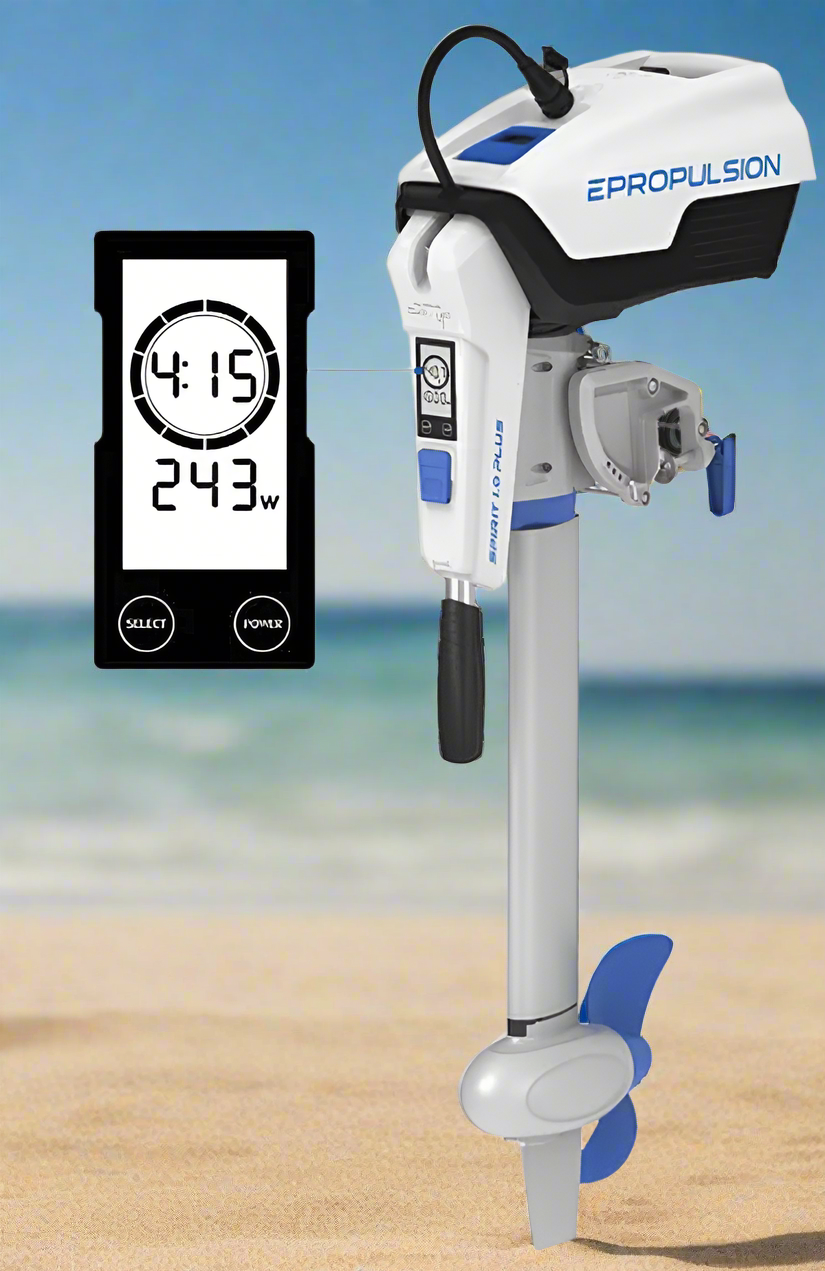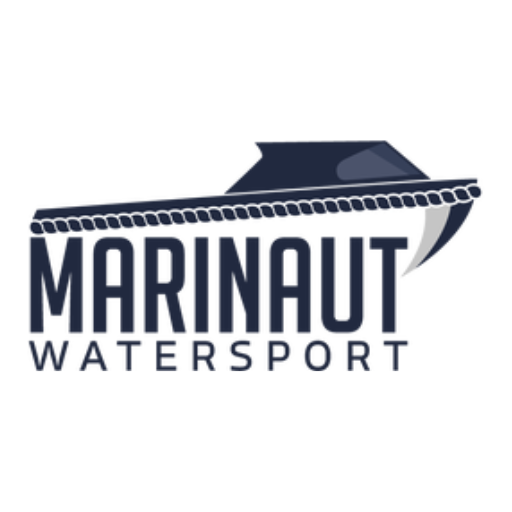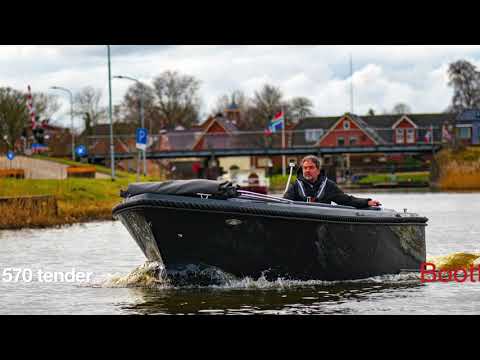Honda 20 HP outboard motor BF20
Honda 20 HP outboard motor BF20
Honda BF 20 outboard motor (3 year warranty).
- 200 euros extra discount on the LRU!
- A PGM-IG 4-stroke engine with twin cylinders. When the 4-stroke comes to life, you'll notice how quiet it is. And thanks to the exclusive Honda rubber mount that absorbs vibrations, it also feels incredibly smooth.
- Honda motorcycles have a reputation based on reliability, superior fuel efficiency and low emissions.
According to boat-fuel-economy.com, full throttle consumption is 4.9 liters per hour. At half throttle, consumption is estimated at 2 to 3 liters per hour. -
A rule of thumb is that for fast boats, you need 1 hp for a total weight of 10 to 20 kilograms. Based on this, this outboard motor is suitable for a total weight of 150 to 300 kilograms.
For displacement boats, 1 hp per 150 to 200 kilograms is sufficient; then the engine is adequate for a total weight of 2 to 3 tons. -
A rule of thumb is that for fast boats, you need 1 hp for a total weight of 10 to 20 kilograms. Based on this, this outboard motor is suitable for a total weight of 400 to 800 kilograms.
For displacement boats, 1 hp per 150 to 200 kilograms is sufficient; then the engine is adequate for a total weight of 6 to 8 tons. - From top to bottom, the BF20 is a elegant looking motorcycle.
- This lightweight 4-stroke engine with a capacity of 350 cc is easy to start. This is thanks to the compression system and Programmed Ignition (PGM-IG). This ignition system precisely delivers the right mixture of fuel and air to the twin cylinders, ensuring these Honda engines start instantly—even from a cold start. The compact engine not only runs very smoothly but is also robust.
- The engine has a High-capacity alternator that supports most of the electronic equipment you have on board – even at lower RPMs and speeds.
- Featuring a four-layer coating process that provides protection against UV rays and saltwater. Four layers of defense: Honda first anodizes the aluminum body with a patented "double-sealing" process. Then, an epoxy primer is applied before the shimmering silver paint is applied. For added UV protection, a clear acrylic resin topcoat is applied. And for added security, a solvent electrode is attached, and all connections are waterproof. Corrosion doesn't stand a chance.
- Easy Reversing : When going forward (A), the propeller will cut through the water normally, but reversing is a different story—unless you have a Honda. On other outboards, the propeller will spin in exhaust bubbles and can't "contact" the water. Our unique reverse exhaust gas guidance system directs the exhaust bubbles away from the propeller (B), allowing it to "grip" the water instead of the air. The result is instant response when reversing, with very precise control.
- 4Front Corrosion Protection: a four-layer coating process that provides protection against UV radiation and salt water. This provides the best protection against the harsh conditions at sea. Four layers of defense: Honda first anodizes the aluminum body with a patented "double-sealing" process. Then, an epoxy primer is applied before the shimmering silver paint is applied. For added UV protection, a topcoat of clear acrylic resin is finally applied. And for added security, a solvent electrode is attached, and all connections are waterproof. Corrosion doesn't stand a chance.
- View here the brochure and the manual .
---
- The Honda warranty covers both manufacturing and material defects during three years from the date of purchase.
- A 10 hp electrically powered engine is also available in joystick or Steering wheel controls. Lower costs over the lifespan, higher residual value, more comfort, and greater sustainability.
-
Test report: review by Boot Magazine Germany 2019 (see also the video on this page).
In a comparative test review by German Boote TV, the Honda took first place. With the 15 hp Honda, the inflatable boat achieved a top speed of 37 kilometers per hour .
The Honda comes from home with a four-bladed propeller in the
Basic equipment, therefore, and it caused a sensation in the test.
Honda had the greatest range at various speeds due to the engine's fuel efficiency.
For a towing test, a line was attached to the boat and a bollard, a scale was hung between them, and full throttle was used. The convincing winner of this towing test was
Honda. Let's take a look at our measurements,
Such as thrust values, range, and its top speed ranking. The Honda takes first place. - With the Lago Amore 570 tender with a boat weight of 550 kilograms and 2 persons you can sail with a 15 hp outboard motor up to a maximum speed of 14 kilometers per hour.
- With the Gentle 590 Tendersloep with a boat weight of 500 kilograms and 2 persons, you can sail with a 15 hp outboard motor up to a maximum speed of 14 kilometers per hour.
- With a 510 sloop you can sail with 1 person up to a maximum speed of 30 kilometers per hour with a 15 hp outboard motor.
Specifications
- 4-stroke engine: Water cooling
- Type 4-stroke: OHC - 2 cylinders
- Cylinder capacity (cm³): 350
- Bore x stroke (mm): 59 x 64
- Full throttle speed: (RPM) 5,000-6,000
- Propeller shaft power: (kW (HP)) 11 (15)
- Cooling system: Water cooling
- Fuel system: 1 carburetor with acceleration pump
- Ignition system: Electronic PGM-IG
- Starting system: Electric / Repeat
- Exhaust system: Via the screw hub
- Gear ratio: 2.08
- Propeller Rotation Direction: Standard
- Trim: Manual 5 positions
- Charging capacity (AMP): 6A
- Including propeller
-
Including Side-mounted Remote Control Box (remote control versions)
-
Includes 12 liter fuel tank with hose, pump bellows and connector
- Delivery time in consultation. LRU type available immediately. Contact us by phone at +31(0)24799804 or by email at info@marinaut.nl or via chat (bottom right).
Types
- The boat's transom height determines the outboard motor's shaft length. Measure from the mounting point of the motor to the bottom. Is the transom height around 43 centimeters? Then you'll need a short shaft. For a length of 51 centimeters, a long shaft is best. You'll need an extra long shaft for a length of 63 centimeters.
- SHU: A 433 mm tailpiece, a battery charger capacity of 6 A. S : short tail, H : manual, U : European version.
- LHU: A 563 mm tailpiece, a battery charger capacity of 6 A. L : long tail, H : manual, U : European version.
- SHSU: A 433 mm tailpiece, a 12-amp battery charger, and electric start. S : short tailpiece, H : manual, S : electric start, U : European model.
- LHSU: A 563 mm tailpiece, a 12-amp battery charger, and electric start. L : long tail, H : manual, S : electric start, U : European model.
- SRU: A 433 mm tailpiece, a 12-amp battery charger, electric starter, and remote control. S : short tailpiece, R : remote control, U : European model.
- LRU: A 563 mm tailpiece, a 12-amp battery charger, electric starter, and remote control. L : long tail, R : remote control, U : European version.
- LRTU: A 563 mm tailpiece, a 12-amp battery charger, electric start, remote control, power trim, and tilt (allowing you to automatically adjust the engine angle). L : long tail, R : remote control, T : tilt, U : European version.
- XRTU: A 703 mm tailpiece, a battery charger with a capacity of 12A, an electric start, a remote control, a power trim and a tilt (with which you can automatically adjust the angle of the engine). X : extra long tail, R : remote control, T : tilt, U : European version.
- The boat's transom height determines the outboard motor's shaft length. Measure from the mounting point of the motor to the bottom. Is the transom height around 43 centimeters? Then you'll need a short shaft. For a length of 51 centimeters, a long shaft is best. You'll need an extra long shaft for a length of 63 centimeters.
Low stock: 1 left
Couldn't load pickup availability
Share




































